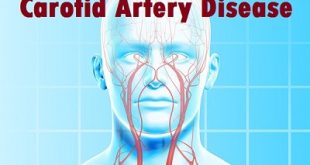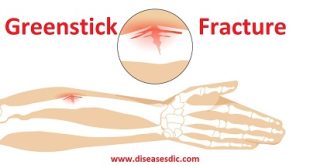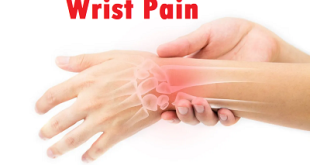Definition
Coccydynia is pain in or around the area of the coccyx, more commonly known as the tailbone. The coccyx is the last bone at the base of the spine. Injury or strain to the surrounding ligaments and muscles may cause this pain and discomfort, which is most often felt while sitting. Coccydynia may require medical treatment if the pain is severe or impeding the ability to perform everyday activities.
Anatomy of Coccydynia
Coccydynia occurs within the tailbone, at the lower part of the spine, which is representative of a vestigial tail. The name comes from the Greek word meaning cuckoo because of the appearance of the coccyx looks like a cuckoo’s beak. Three to five fused vertebrae make up the coccyx. On the ventral side of the coccyx, it is slightly concave while on the dorsal aspect it is slightly convex. Both sides have transverse grooves showing where the vestigial units were once fused. The coccyx is attached to the sacrum stemming from the dorsal grooves being attached with either a true synovial joint or a symphysis, as well as the anococcygeal ligament, coccygeal muscle and the gluteus maximus muscle.
Epidemiology
Coccygodynia accounts for fewer than 1% of all back pain conditions. It is five times more prevalent in women than in men, presumably because the bone is more prominent in women than in men. Although coccygodynia can occur over a wide age range, the mean age of onset is around 40 years.
Causes of Coccydynia
Coccydynia has several possible causes, the 3 most common being:
- Trauma from falling or being bumped
- Repetitive action, such as extensive bike riding or rowing
- Childbirth
These activities can fracture, dislocate or bruise the tailbone. If this occurs, you may experience painful inflammation and muscle spasms in the tailbone area.
Other possible causes of coccydynia include:
- Bone spurs on the coccyx: A small bone spur on the lowest part of the coccyx can pinch the surrounding area, and cause pain and discomfort while sitting.
- Joint instability: Coccydynia can occur if the sacrococcygeal joint (which connects the coccyx and sacrum) allows too much or too little movement.
- Osteoarthritis (eg, spinal arthritis)
- Infection, metastatic cancer, chordomas, and arachnoiditis are rare causes.
Tailbone pain and lower back pain can mimic coccydynia in sciatica, infection, pilonidal cysts (a type of skin infection), and fractured bone. Your doctor will rule out these causes to make a coccydynia diagnosis.
There are three types of events that cause tailbone pain
External Trauma: A bruised, broken, or dislocated coccyx caused by a fall.
Internal Trauma: Trauma caused by difficult childbirth or from sitting on a narrow or hard surface for too long.
Others: Infection, abscess, and tumors.
Interestingly, for one-third of those with coccydynia, the cause is unknown.
Coccydynia risk factors
Factors associated with an increased risk of developing coccydynia pain are:
- Being overweight
- Being female – women are 5 times more likely to develop the condition
- Increased flexibility or mobility of the joint (hypermobility)
- Reduced flexibility or stiffness of the joint (hypomobility)
- Variants of coccyx shape
- Pelvic floor muscle weakness or overactivity
Symptoms of Coccydynia
The symptoms of coccydynia include:
- Achy or piercing pain in the tailbone.
- More severe pain when changing from sitting to standing up.
- More severe pain when sitting for long periods of time.
- Pain during bowel movements.
- Pain during sex.
Other related symptoms that may occur with coccydynia include:
- Poor sleep.
- Painful buttocks.
- Back pain.
Coccydynia complications
Complications such as rectal injury, anal sphincter injury and incontinence have been rarely reported.
Diagnosis
Your medical history will help your doctor find the cause of your pain. Let your doctor know about any falls or other accidents that involved your tailbone. If your pain came on gradually, a physical exam might be necessary.
Physical Examination
During your exam your doctor will look for:
- Bruising
- Swelling
- Rash
- Signs of infection, like warmth, redness, or discharge
- A skin dimple, which could be a sign of a bone spur
Your doctor may also press on your tailbone. If the area is tender, it could mean there’s a fracture.
Your doctor may also decide to do a rectal exam. During this exam, the doctor inserts a lubricated, gloved finger into your anus and grasps your tailbone between thumb and forefinger.
This helps the doctor evaluate the range of motion in the joint and ligaments. It can also reveal tenderness in the area.
Imaging
Sometimes, but not always, x-rays can identify a tailbone injury.
These x-rays may be done while you’re standing and sitting down. This can help find the extent of the injury. It may also find alignment problems, dislocations, or fractures.
In rare cases, your doctor may order a magnetic resonance imaging scan (MRI). During this scan, a magnetic field and radio waves create images of the internal structures around your tailbone. This can be used to find cancer or infection.
Treatment for Coccydynia
In many cases, we can treat patients using conservative measures to resolve coccyx inflammation. This could include:
- Rest
- Pain medication
- Use of a well-padded seat or pillow
- Avoiding long periods of sitting
- Hot or cold packs
- Wearing loose fitting clothing
Well-padded pillow
However, if this fails to relieve your symptoms, we may recommend other treatment options to help reduce your coccydynia pain:
Anti-inflammatory painkillers (NSAIDs): NSAIDs, such as Ibuprofen, can ease painful symptoms and reduce inflammation around your coccyx.
Physiotherapy: A physiotherapist can offer posture advice and teach you techniques to reduce coccyx pain such as exercises, stretches and massages.
Injections: Corticosteroid injections can reduce inflammation and pain, but relief usually only lasts a few weeks. A local anesthetic can also be injected into your coccyx nerves to alleviate pain signals coming to this region – a treatment option that generally lasts longer than corticosteroids.
Dorsal root ganglion (DRG) stimulation: The DRG is a cluster of nerve cells that communicates with the nervous system, and it sits just outside the spinal canal between two discs in the back. It guides information from the arms and legs through the spinal cord and into the brain. Stimulating these nerves can help to block pain signals being sent to the brain, which provides relief for the patient.
Surgery: If all other treatment options have failed, your specialist may recommend partial coccygectomy, where some of the tailbone is removed, or total coccygectomy to remove the entire coccyx. Most people find this greatly improves their painful symptoms, though others still experience coccydynia symptoms.
Coccydynia home remedies
To help manage symptoms, an orthopedician may also prescribe some tailbone pain treatments you can do at home. Some home remedies for tailbone pain include:
Altering your sitting position – Sometimes, tailbone pain from sitting can be attributed to poor posture. By sitting with your back against the backrest along with your feet placed flat on the floor may help to take the strain off the coccyx bone. Ensuring you are leaning forward before you sit and also choosing places that are not hard to sit on are ways to minimize discomfort. An orthopedician may also recommend sitting on a V-shaped or a doughnut-shaped cushion to help relieve pressure on the tailbone.
Stretches and Yoga – Stretches are a great way to relieve tension in the muscles supporting the tailbone. Several yoga poses have been known as a great tailbone pain remedy by catering specifically to stretching out and strengthening the muscles attached to the tailbone. Yoga stretches have also been known to ease lingering tailbone pain during pregnancy in women. However, it is important to follow-up with your orthopedician about whether this tailbone pain treatment is helping with the pain or making it worse.
Ice treatments – Icing can help in dealing with tailbone pain caused by traumatic injuries. Applying an ice pack to the affected area for 15 to 20 minutes around 4 to 5 times a day post an injury can help in relieving pain and even swelling that may be caused by the blow to the tailbone.
Diet – If coccydynia was caused due to severe constipation, then your doctor may recommend eating foods that are rich in fibre to regulate bowel movements, especially soften stools. If your eating habits have not been healthy, a doctor may recommend going on a detox diet or cleanse to reset the body. Eating a balanced diet may also help ease tailbone discomfort caused by weight issues like obesity or even being underweight.
Prevention of Coccydynia
You can protect the tailbone area by adopting good posture, by avoiding long periods of sitting, and by avoiding or minimizing activities that cause pain. A positive attitude, regular activity, and a prompt return to work are important elements of recovery. If regular job duties cannot be performed initially, modified (light or restricted) duty may be prescribed for a limited time.
Prevention is key to avoiding recurrence:
- Good posture during sitting, standing, moving
- Regular exercise with stretching / strengthening
- Proper equipment and procedures if engaging in contact sports
- Seatbelt usage when traveling
- An ergonomic work area
- Good nutrition, healthy weight, lean body mass
- Stress management and relaxation techniques
- No smoking
 Diseases Treatments Dictionary This is complete solution to read all diseases treatments Which covers Prevention, Causes, Symptoms, Medical Terms, Drugs, Prescription, Natural Remedies with cures and Treatments. Most of the common diseases were listed in names, split with categories.
Diseases Treatments Dictionary This is complete solution to read all diseases treatments Which covers Prevention, Causes, Symptoms, Medical Terms, Drugs, Prescription, Natural Remedies with cures and Treatments. Most of the common diseases were listed in names, split with categories.







